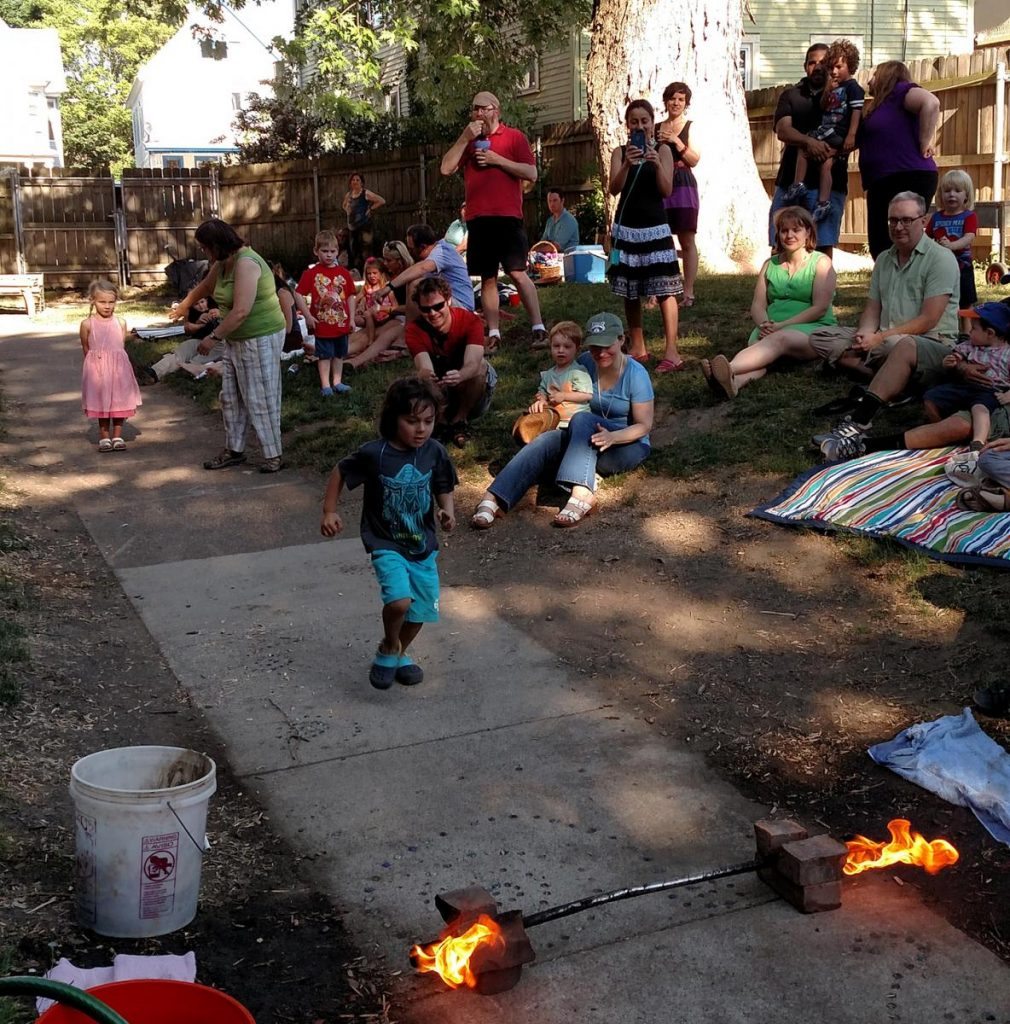Balancing Child Safety and Risk in the Parenting Dance
By Judy Frizlen
When to step in and when to step out is a fundamental parenting question and the answer is personal, situation specific, and ever-changing along with the developing child. I must say that it is a question that gave me pause while parenting young children and still presents a challenge in my relationships with adult children. The answers to our questions lie in that pause. At the same time that we want children to build skills and confidence, we also want to ensure that they are safe.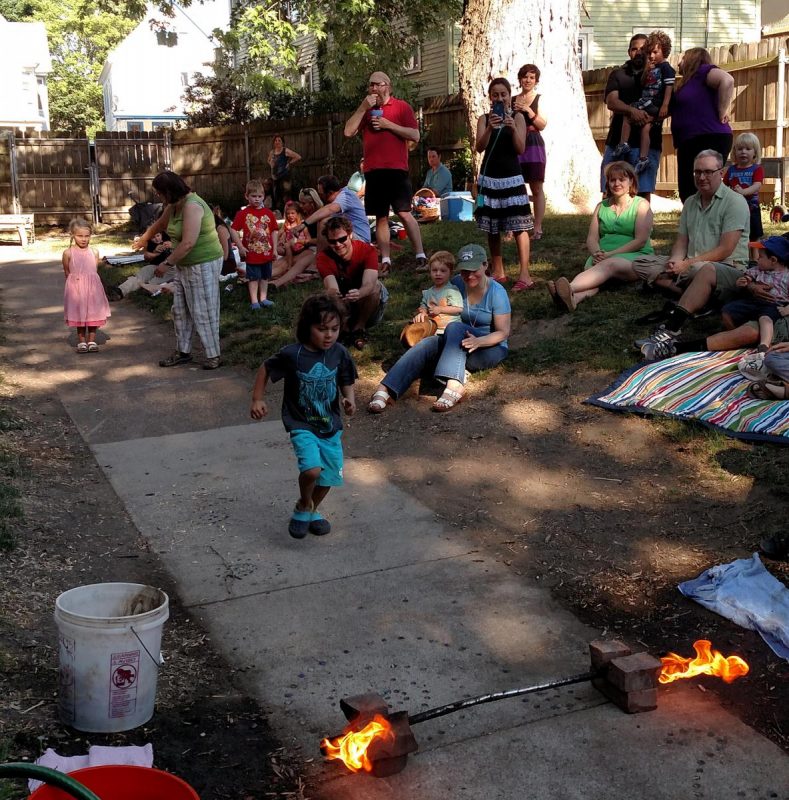
There is no formula to apply because each child is unique, and whatever actions are taken must be authentic in order to meet the moment. Any parenting approach that encourages self-development trumps a set of rules because it takes into account the individuals involved, the changing circumstances, and encourages decision-making on a moment-to-moment basis. Although there is no formula, there are things to consider while preparing for both age- and child-appropriate risk-taking and safety. They are: personal development for parents, creating the environment, having a first aid kit on hand, and finding community support.
Self-Development
In parenting young children, the primary message is: “The world is good and welcome to it.” How do we convey this message in a world that is also fraught with risk and challenge that can be daunting even to adults? We build a sense of security in our children (and shore up our own inner security) by adopting rhythms of the day, week, and year, to bring predictability to the child’s world. Children depend on adults for their basic needs, and so the adults must determine how to meet the child’s dependency need. Rhythms are a reliable means of creating safety by preventing children from becoming too tired, hungry or imbalanced; they also provide a respite from parent decision-making, which conserves precious energy. Meeting children’s needs includes not only what we provide for our children in the way of home, food and care, but the way in which we provide for those needs.
The “how of parenting” involves striving for an even keel emotionally, which can be challenging, particularly in situations involving our children. Although equanimity does not mean an absence of a full range of emotions, it does mean acknowledging emotions when they come up so they can move through us without our acting from them. Parents are encouraged and often motivated to develop self-awareness and then enough discipline to refrain from allowing emotions to rule actions. Children feel comforted and secure in the presence of adults who are predictable. In this way, parents model self-discipline for children to imitate and learn in the way that children learn. This may involve careful observation of our child’s growing skill in climbing rather than fearful reactivity. It takes practice for a child to learn a new skill and thwarting a practice session increases rather than decreases the risk of accidents occurring. It takes commitment, practice, and patience for parents to develop the ability to choose their own thoughts, emotions and actions.
Creating an Environment of Safety, Success and Appropriate Risk
The young child is a natural explorer; he or she engages the senses fully to learn about the world. Before a child is three years old, that exploration involves not only the visual, tactile, auditory and olfactory senses, but also the sense of taste. Everything that is put in hand is fair game for going into the mouth. That’s something to bear in mind when choosing the environment for a child. Know the laws of the state you live in. For example in New York State, we are working on legislation that would mandate that all children’s toys include labelling of the chemicals that went into producing them. In this way, parents become aware of toxic chemicals, read labels and make healthy choices in purchasing toys.
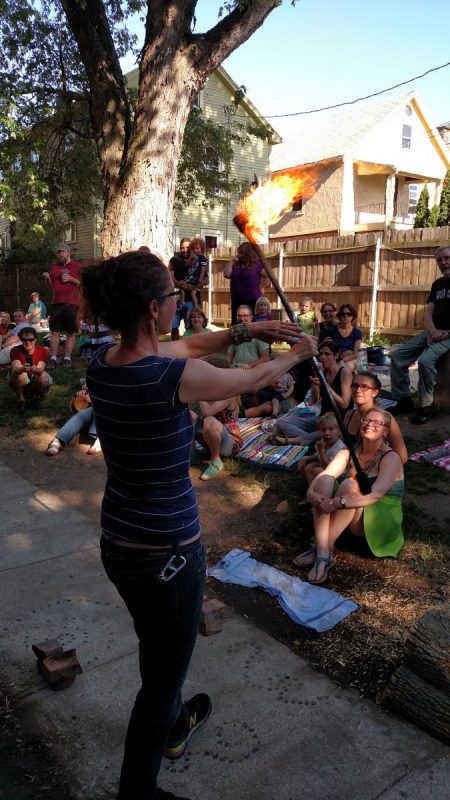 Without labelling, parents need to choose from the companies that create healthy toys (without harmful chemicals) or buy directly from the producer. Craft fairs are a lovely place to find hand-made wooden toys and to verify chemical content with the crafts person. Often they will also guarantee their toys so that you can get them repaired if they don’t stand up to the product-testing your child brings to playing with the toy. As far as safety goes, ingesting harmful chemicals is the primary one to address, in my opinion, since you will not be able to prevent your child from putting things in his or her mouth until the oral stage is completed, and the chemicals’ impact on development is large.
Without labelling, parents need to choose from the companies that create healthy toys (without harmful chemicals) or buy directly from the producer. Craft fairs are a lovely place to find hand-made wooden toys and to verify chemical content with the crafts person. Often they will also guarantee their toys so that you can get them repaired if they don’t stand up to the product-testing your child brings to playing with the toy. As far as safety goes, ingesting harmful chemicals is the primary one to address, in my opinion, since you will not be able to prevent your child from putting things in his or her mouth until the oral stage is completed, and the chemicals’ impact on development is large.
In an outdoor area, “loose parts” playgrounds offer the most opportunities for safe exploration. Studies show that formed playground equipment, such as slides, indicate how high a child should climb whereas loose parts playgrounds are more individualized. For example, when a child encounters a stump in the yard, the child must consider if it is for climbing, sitting, standing or tipping over to look for bugs. This internal assessment happens quickly and effectively so that the child chooses an action that he or she is capable of carrying out. In other words, if the child is not capable of climbing on top of a stump, he or she will not attempt to do so, but if the child is a bug-lover, motivation for tipping the stump to look for bugs is high. The child is then motivated to try several times to do it, or to reach out for helping hands from a friend, or move on to another task that he or she is able to execute.
Be Ready to Tend Hurts when Accidents Happen
In spite of our efforts to create a safe environment for children to engage in tasks that suit their age and ability level, children will fall or get hurt in a myriad of ways that are normal and to be expected in the process of day-to-day learning by doing. What do we do then? First of all, if a child is crying and his or her knee is bleeding, saying, “You’re okay” is not addressing what is. The child is hurt so it’s best to calmly affirm what is, “You scraped your knee. We will tend to it.” That’s when you reach for the boo-boo kit which needs to be stocked and in a reliable spot where you can find it as needed.
Then proceed to tend the wound in the way that you planned when you stocked your kit. It is customary to wash, apply an ointment and then a band-aid to protect a wound, but each family needs to create their own version of this treatment. It’s also a good idea to have remedies on hand for bug bites, bruises, and burns. Once you have tended the child’s wound and offered reassurance, it is time for the child to return to play or to the next activity, according to your family rhythms.
Community Support – It Takes a Village
Since much of the work of addressing safety and risk is done in preparing the environment for children’s successful exploration, the number of on-the-spot decisions that arise is manageable. Like steps choreographed and practiced prior to a performance, once we know them, our enjoyment of the parenting dance is increased. However, there are times where the child is exploring a new environment or social situations that may involve intervention.
At the Rose Garden, we have one rule concerning social interactions, which is you cannot hurt anybody. Therefore, if someone does get hurt, we intervene. Again, how we intervene matters, so we strive to stay calm, communicate clearly and then follow up. We share with parents guidelines for how to intervene in social situations involving children so they can be familiar with our methods. Children can sort through some situations, but they need to know that if someone gets hurt, the adults will step in to assist them and the 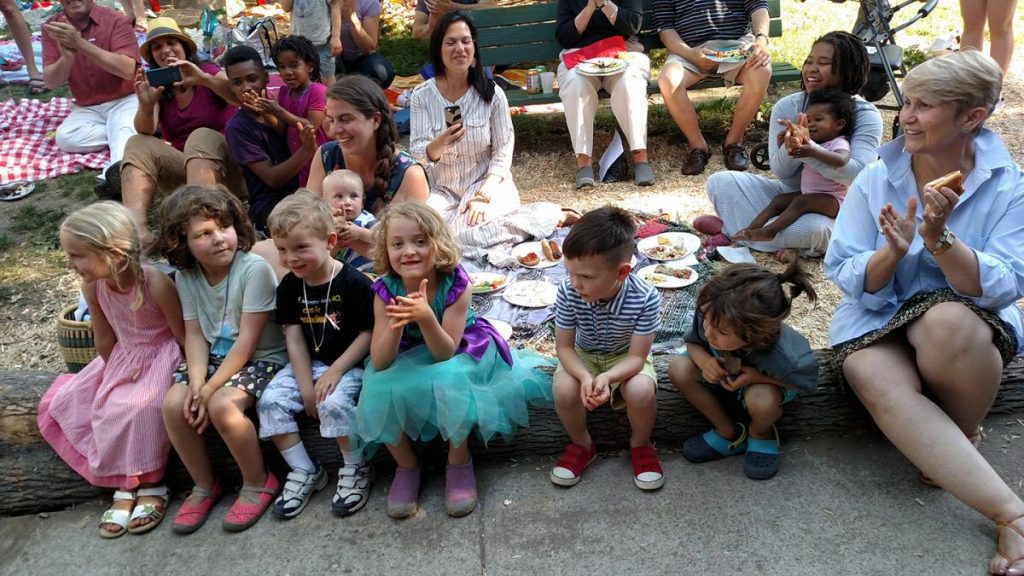 adults have agreements about how to do it.
adults have agreements about how to do it.
During the midsummer festival at the Rose Garden Early Childhood Center, we created a ritual that celebrates the element of fire, so you could say it involves a balance of risk and safety. It occurs around the time of the summer solstice on June 21st, just before the celebration of St. Johnstide (June 25). One of our founding lead teachers was a fire dancer and when she returned to her native Germany, she gifted us with a fire stick. Each year, during the festival, the five-year-olds who are prepared to leave the realm of early childhood, jump over the fire stick. That’s the risky part.
We create safety by securing the four-foot-wide stick between bricks about four inches off the ground. There are buckets of water nearby and a wet towel on either side of the stick where an adult is stationed. During this year’s celebration, a child who was timid when he first came, a deep thinker, reassured his parents that all will be well, they did not need to worry, he could jump over the fire stick and he did! The children ran and jumped with grace, confident in their abilities. I suggest that the community reinforcement and trusting relationship with the adults gives the children confidence, as in, “If all these people think I can do it, I guess I can!”
So much of what happens with children depends on our preparation, but even with careful preparation, things will inevitably happen that are beyond our control. Toddlers are known to fall over even while standing in place because they have limited experience being upright. The best we can do is to have rhythms in place, our emotions in balance (a dynamic process), the environment set up for safety, boundaries clearly defined, community support and a boo-boo kit nearby to handle injuries. Then we can relax into the moment when our children are at play. Being present physically, emotionally and mentally creates a sort of safe cocoon in which the moment can unfold. Children sense when adults are fully present, as do the helpful forces in nature and the spiritual world.
In order to encourage exploration, children are well served by adults who are prepared, present and at peace, trusting that their child is safe and if an accident occurs, they can tend to it and the child will heal. That way the message is, “All is well and right in the world. Welcome to it!”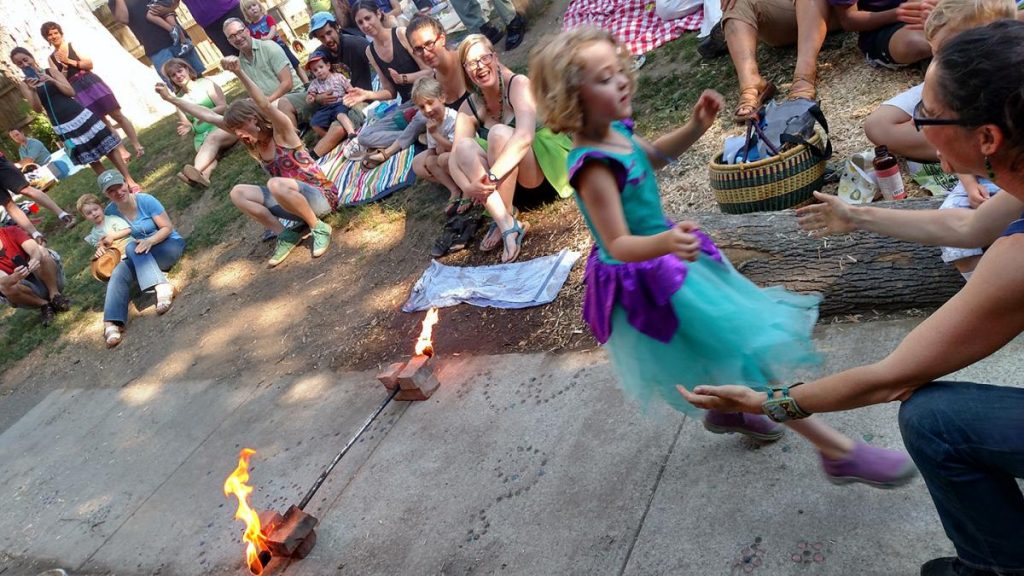
Judy Frizlen is the founder of The Rose Garden Early Childhood Center, a LifeWays Representative Center in Buffalo, New York. She is also the author of Words for Parents in Small Doses, which provides weekly essays and contemplations for parents that correlate with the seasons. She is currently working on a similar book for caregivers.
